February: Survival
When I reached my phenology site, I noticed that there was a beautiful owl sleeping in a nearby tree. I was originally searching the area for birds because there was an interesting call that sounded like water trickling in different notes. While searching for this bird, I noticed the owl. The call was too high for the deep call of the owl, and I was unable to find the bird I was looking for. However, it was an amazing experience because I had not expected to see an owl in such a populated area like Centennial Woods. After researching on the Audubon society website, I was able to identify it as a barred owl (Strix varia) (Figure 3). After looking through a variety of their photos, I could match the darker feather around the neck and framing the face, and the whiter feather of the belly to be similar to a barred owl. Since owls are nocturnal and I traveled to my site around 10:00 in the morning, I was not surprised to notice that it was sleeping. Barred owls prefer habitats close to rivers and my site is right next to the stream where the owl was sleeping in a tree directly next to it (audubon.org). While I was originally drawn by the call of a different bird, I heard a bark or cough but did not see any people or dogs nearby. The noise appeared to be coming from very close and while researching I learned that barred owls will make small barking noises before their call which could explain the noise that I heard (nationalgeographic.com). There is an open field near my site. While it is covered in snow and most small rodents are hibernating, the field would be a perfect hunting ground for the owl as it likes to sit on a perch and swoop to grab its meal (audubon.org).
Owls hunt small rodents, especially mice and squirrels, and the occasional fish. The location near the stream would have been a good food source, however there are no fish in that part of the stream because of the abundance of rocks. However, there were tracks showing sporadic behavior on the ice sheets frozen over the stream. I wished to get a closer look, but as the tracks were on a sheet of ice over the stream, I did not want to step onto it. The tracks showed that it ran in circles on the ice as the overlapped each other, before running off into the clearing. The tracks appeared to belong to a gray squirrel and it can be assumed that its behavior was caused by seeing the owl and it was frightened (Figure 1). I determined that it was a gray squirrel because you could see the toes of the squirrel and narrow shape of the feet. It was not in a hopping motion so I knew it was not a bunny, and the small size of the tracks eliminated any larger animals. There also was a large abundance of birds in the area at the time as I heard a variety of different calls. During the winter, barred owls tend to hunt for small birds as other food is limited (Lewis. D). Being nocturnal has its advantage here as barred owls have difficulty catching birds from the air, so they wait until nightfall to hunt when the birds are less active (Lewis. D). The abundance of bird calls could show that the other birds are aware that the owl is nocturnal, and they are not afraid to make calls since they know it is sleeping, despite it being so close by.
There were a few changes in my site since my last visit. The stream has become nearly completely frozen over, except for a few circular spots where the movement of the water underneath is stronger (Figure 2). I had originally thought the tracks over the ice could be a fox because they are much larger, however the tracks get larger as the snow melts and the weather has been warmer lately (Schneider. E). These factors helped me come to the conclusion that the tracks belonged to a gray squirrel. The warm weather has also drawn out a lot of squirrels as I saw many running around in search of food. It has not snowed recently so most of the remaining snow, even in my remote site off of the trail, has been packed down to a solid from all the hikers walking on it. I also noticed and empty hornets nest hanging from a tree across the stream. It appeared to have been empty for a while, and I simply had not noticed it before, since a side of it had been broken open probably from the harsh wind in snow from the past month.
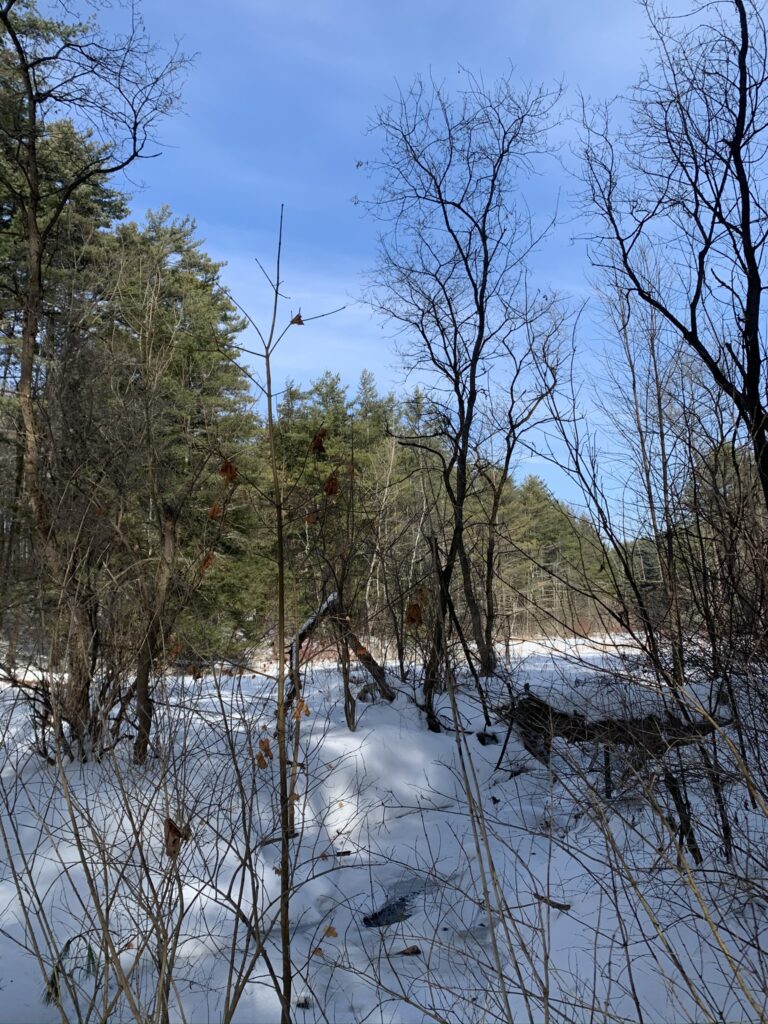
Field by My Site 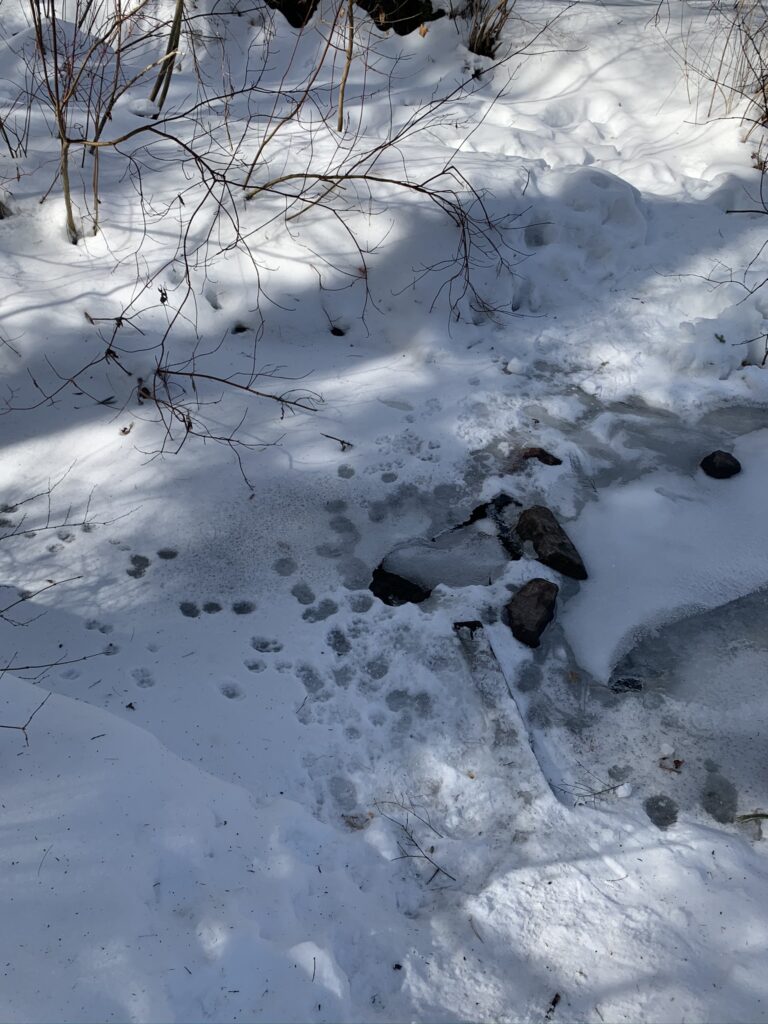
Figure 1: Grey Squirrel Tracks 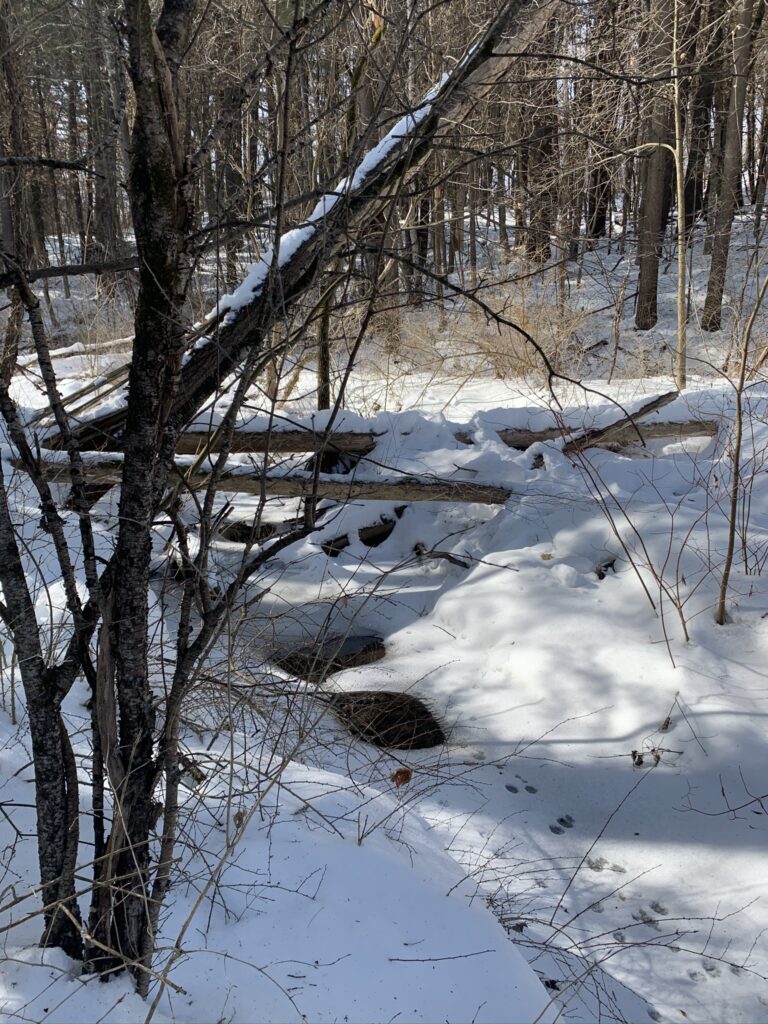
Figure 2: Frozen Stream 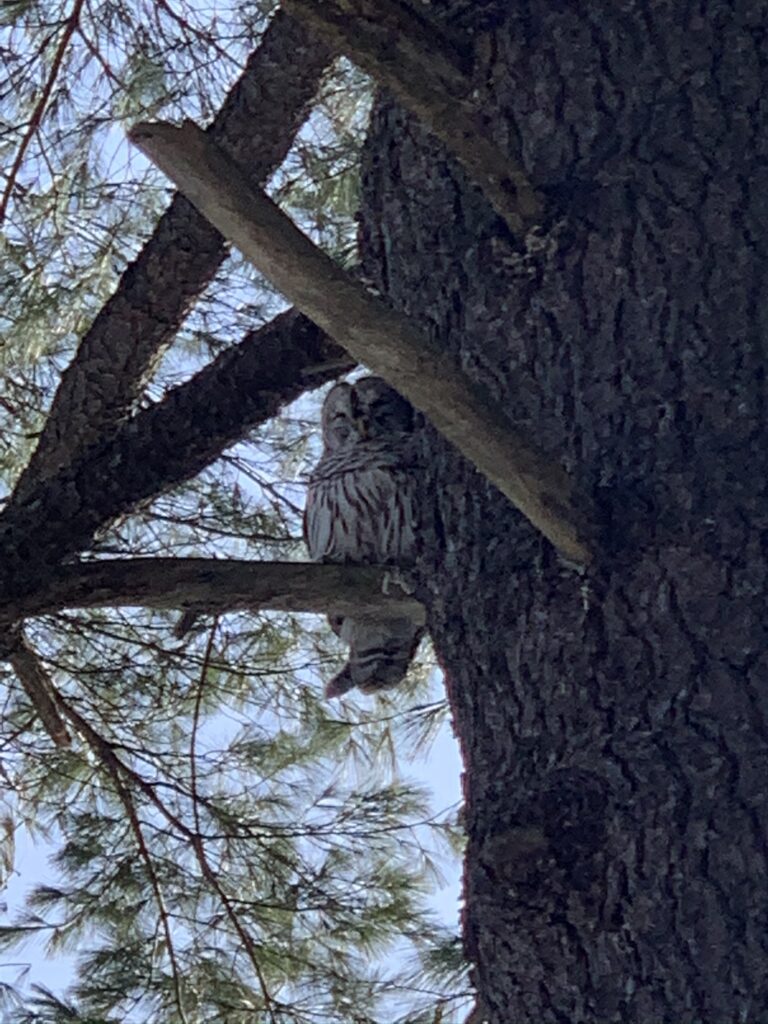
Figure 3: Barred Owl 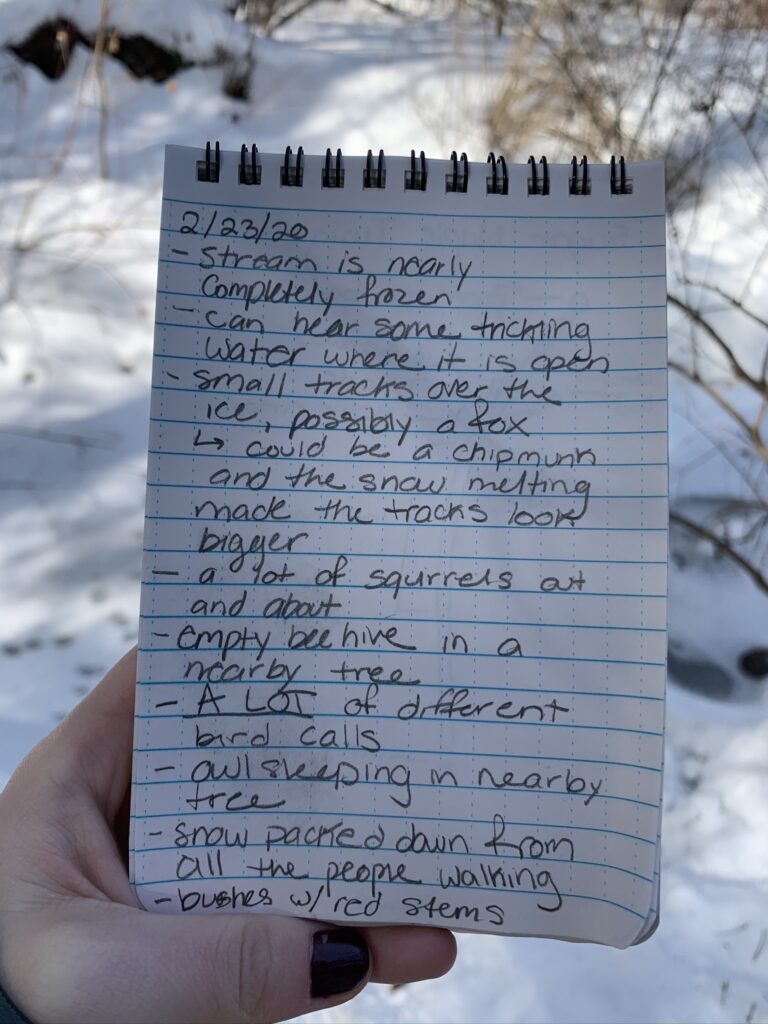
Figure 5: Field Notes
All Photos: Garufi (2020, February 23) [photographs]
Citations:
Barred Owl. (2018, September 21). Retrieved February 26, 2020, from https://www.nationalgeographic.com/animals/birds/b/barred-owl/
Barred Owl. (2019, October 11). Retrieved February 26, 2020, from https://www.audubon.org/field-guide/bird/barred-owl
Lewis, D. (n.d.). Barred Owl (Strix varia) – Information, Pictures, Sounds. Retrieved February 26, 2020, from https://www.owlpages.com/owls/species.php?s=1740
